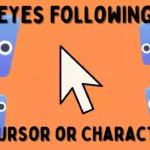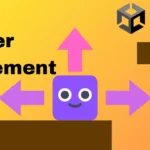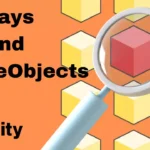Qookie Games
Creating Simple 2D Player Movement and Jumping in Unity
In this tutorial, we'll walk through the process of setting up basic 2D player movement and jumping mechanics in Unity using a C# script. By the end of this tutorial, you'll have a player character that can move horizontally and jump when the spacebar is pressed.
In this tutorial, we’ll walk through the process of setting up basic 2D player movement and jumping mechanics in Unity using a C# script. By the end of this tutorial, you’ll have a player character that can move horizontally and jump when the spacebar is pressed.
Step 1: Setting Up Your Unity Project
- Create a New Unity Project:
- Open Unity Hub and create a new 2D project.
- Set up your project settings as per your preferences.
- Set Up Your Scene:
- Create a new GameObject for your player character (
GameObject->Create Empty). - Attach a
Sprite Renderercomponent and choose a sprite for your player. - Add a
Rigidbody2Dand Collider 2D component to your player GameObject to enable physics interactions.
- Create a new GameObject for your player character (
Step 2: Writing the PlayerController Script
- Create a C# Script:
- Right-click in your Assets panel in Unity.
- Choose
Create->C# Scriptand name itPlayerController.
- Edit the PlayerController Script:
- Double-click the
PlayerControllerscript to open it in your preferred code editor.
- Double-click the
using System.Collections;
using System.Collections.Generic;
using UnityEngine;
public class PlayerController : MonoBehaviour
{
public float moveSpeed = 5f;
public float jumpForce = 10f;
private bool isGrounded;
private Rigidbody2D rb;
void Start()
{
rb = GetComponent<Rigidbody2D>();
}
void Update()
{
// Handle horizontal movement
float moveInput = Input.GetAxis("Horizontal");
rb.velocity = new Vector2(moveInput * moveSpeed, rb.velocity.y);
// Handle jumping
if (Input.GetButtonDown("Jump") && isGrounded)
{
rb.velocity = new Vector2(rb.velocity.x, jumpForce);
}
}
void OnCollisionEnter2D(Collision2D collision)
{
// Check if the player is on the ground
if (collision.gameObject.CompareTag("Ground"))
{
isGrounded = true;
}
}
void OnCollisionExit2D(Collision2D collision)
{
// Check if the player is no longer on the ground
if (collision.gameObject.CompareTag("Ground"))
{
isGrounded = false;
}
}
}
Step 3: Implementing Basic Player Movement and Jumping
- Understanding the Script:
- Variables: Adjust
moveSpeedandjumpForcevariables to tweak player movement and jumping physics. - Start(): Initialize the
Rigidbody2Dcomponent. - Update(): Handles horizontal movement (
Input.GetAxis("Horizontal")) and jumping (Input.GetButtonDown("Jump")). - Collisions: Detects whether the player is grounded using
OnCollisionEnter2D()andOnCollisionExit2D().
- Variables: Adjust
- Attach the Script:
- Drag and drop the
PlayerControllerscript onto your player GameObject in the Unity editor.
- Drag and drop the
Step 4: Setting Up Your Scene
- Create Ground Objects:
- Create one or more GameObjects with
BoxCollider2Dcomponents. - Tag these GameObjects as “Ground” to ensure the player can detect when they are grounded.
- Create one or more GameObjects with
Step 5: Testing Your Player Controller
- Play Your Game:
- Press the
Playbutton in Unity to test your player character. - Observe how the player moves left and right using arrow keys or
AandD, and jumps using the spacebar.
- Press the
Conclusion
Congratulations! You’ve now implemented basic 2D player movement and jumping mechanics in Unity. This setup forms the foundation for more complex gameplay mechanics, such as double jumping or variable jump heights. Experiment with different values for moveSpeed and jumpForce to achieve the desired gameplay feel. Happy game development!





